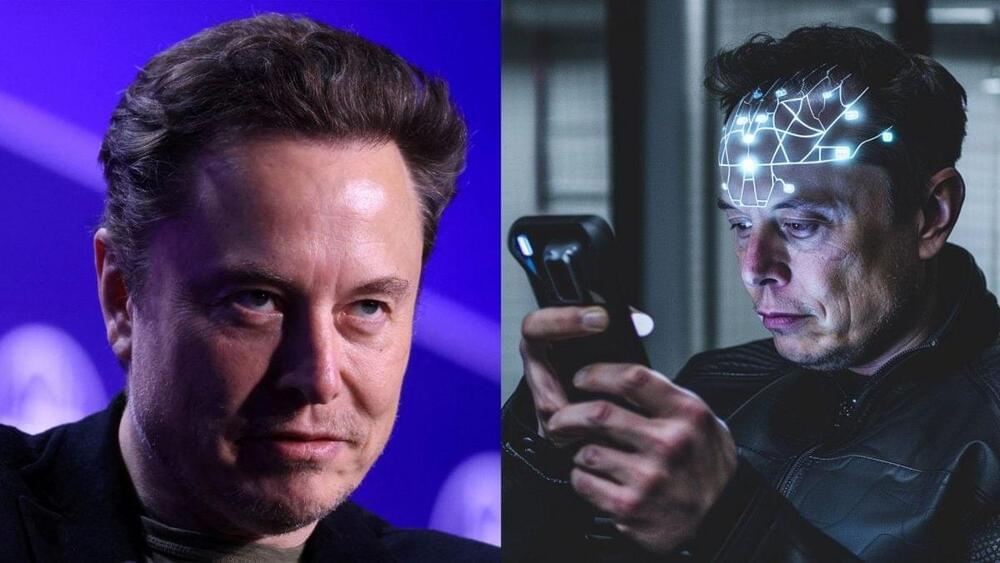Stephen Wolfram explores simple models of biological organisms as computational systems. A study of progressive development, multiway graphs of all possible paths and the need for narrowing the framework space.
Category: computing – Page 264

Quantum computing breakthrough solves key obstacle for revolutionary tech
In the race to develop practical quantum computers, a team of researchers has achieved a significant milestone by demonstrating a new method for manipulating quantum information. This breakthrough, published in the journal Nature Communications, could lead to faster and more efficient quantum computing by harnessing the power of customizable “nonlinearities” in superconducting circuits.
Quantum computers promise to revolutionize computing by leveraging the principles of quantum mechanics to perform complex calculations that are impossible for classical computers. However, one of the main challenges in building quantum computers is the difficulty in manipulating and controlling quantum information, known as qubits.
The researchers, led by Axel M. Eriksson and Simone Gasparinetti from Chalmers University of Technology in Sweden, have developed a novel approach that allows for greater control over qubits by using a special type of superconducting circuit called a SNAIL (Superconducting Nonlinear Asymmetric Inductive eLement) resonator.


A New Way to Transport Spin Currents
Spintronics relies on the transport of spin currents for computing and communication applications. New device designs would be possible if this spin transport could be carried out by both electrons and magnetic waves called magnons. But spin transport via magnons typically requires electrically insulating magnets—materials that cannot be easily integrated with silicon electronics. A way to bypass that requirement has now been found by Matthias Althammer at the Bavarian Academy of Sciences and Humanities in Germany and his colleagues [1]. The researchers say that this finding could have important implications for both spintronic applications and fundamental research on spin transport.
To demonstrate their concept, Althammer and his colleagues placed two magnetic, metallic strips—each hosting coupled electrons and magnons—on a nonmagnetic, insulating substrate. In the first strip, the researchers converted electron charge currents to electron spin currents. These spin currents were transferred first to the magnons in the same strip, then across the substrate to the magnons in the second strip, and finally to the electrons in the second strip. The researchers detected this spin transport by converting the electron spin currents in the second strip to charge currents.
Althammer and his colleagues studied how the spin transport between the two strips depended on temperature and strip separation. These measurements suggested that the transport was achieved via a magnetic dipole–dipole interaction between the strips. But the researchers could not rule out the possibility that it partly or mainly occurred via crystal vibrations in the substrate. Solving this open problem, which the researchers plan to do in upcoming work, will help in optimizing devices based on this principle.

Biggest Self-Own in Quantum Computing, Ever
Learn more about quantum computing on Brilliant! First 30 days are free and 20% off the annual premium subscription when you use our link ➜ https://brilliant.org/sabine.
Quantum computing, so the fairy tale goes, is the next big thing in technology. News has popped up time and time again noting major advancements in the field, but the latest statement from company D-Wave had people scratching their heads. Are quantum computers really the next big thing? Who’s at the forefront of the field now? Let’s have a look.
Paper: https://arxiv.org/abs/2406.01743v1
🤓 Check out my new quiz app ➜ http://quizwithit.com/
💌 Support me on Donorbox ➜ https://donorbox.org/swtg.
📝 Transcripts and written news on Substack ➜ https://sciencewtg.substack.com/
👉 Transcript with links to references on Patreon ➜ / sabine.
📩 Free weekly science newsletter ➜ https://sabinehossenfelder.com/newsle…
👂 Audio only podcast ➜ https://open.spotify.com/show/0MkNfXl…
🔗 Join this channel to get access to perks ➜
/ @sabinehossenfelder.
🖼️ On instagram ➜ / sciencewtg.
#science #sciencenews #quantumcomputing #technology #technews #tech


Electric fields catalyse graphene’s energy and computing prospects
Researchers at the National Graphene Institute have made a groundbreaking discovery that could revolutionise energy harnessing and information computing. Their study, published in Nature (“Control of proton transport and hydrogenation in double-gated graphene”), reveals how electric field effects can selectively accelerate coupled electrochemical processes in graphene.
Electrochemical processes are essential in renewable energy technologies like batteries, fuel cells, and electrolysers. However, their efficiency is often hindered by slow reactions and unwanted side effects. Traditional approaches have focused on new materials, yet significant challenges remain.
The Manchester team, led by Dr Marcelo Lozada-Hidalgo, has taken a novel approach. They have successfully decoupled the inseparable link between charge and electric field within graphene electrodes, enabling unprecedented control over electrochemical processes in this material. The breakthrough challenges previous assumptions and opens new avenues for energy technologies.
Vortex Power: The Swirl of Light Revolutionizing Quantum Computing
Researchers at the Weizmann Institute of Science discovered a new type of vortex formed by photon interactions, which could advance quantum computing.
Vortex Phenomena
Vortices are a widespread natural phenomenon, observable in the swirling formations of galaxies, tornadoes, and hurricanes, as well as in simpler settings like a stirring cup of tea or the water spiraling down a bathtub drain. Typically, vortices arise when a rapidly moving substance such as air or water meets a slower-moving area, creating a circular motion around a fixed axis. Essentially, vortices serve to reconcile the differences in flow speeds between adjoining regions.

Jupiter’s Great Red Spot: A Different Spot from Cassini’s 1665 Observation
“It has been very motivating and inspiring to turn to the notes and drawings of Jupiter and its Permanent Spot made by the great astronomer Jean Dominique Cassini, and to his articles of the second half of the 17th century describing the phenomenon,” said Dr. Agustín Sánchez-Lavega.
Jupiter’s Great Red Spot was first discovered in 1,665 by astronomer Giovanni Domenico Cassini, and both scientists and the public have been awe-stricken by its beauty and the processes that created it. However, a recent study published in Geophysical Research Letters postulates that the famous spot we’ve adored for so long is not the same spot that Cassini observed centuries ago. This study holds the potential to help astronomers better understand the formation and evolution of Jupiter and the massive cyclonic storms that comprise its giant atmosphere.
For the study, the researchers analyzed historical records of both the initial discovery from Cassini, which was dubbed the “Permanent Spot” (PS) and was observed until 1,713, and the Great Red Spot (GRS), which was first observed in 1831. Combining these historical records with computer models, the researchers determined that the size changes and movements over time of PS contrast those of GRS.